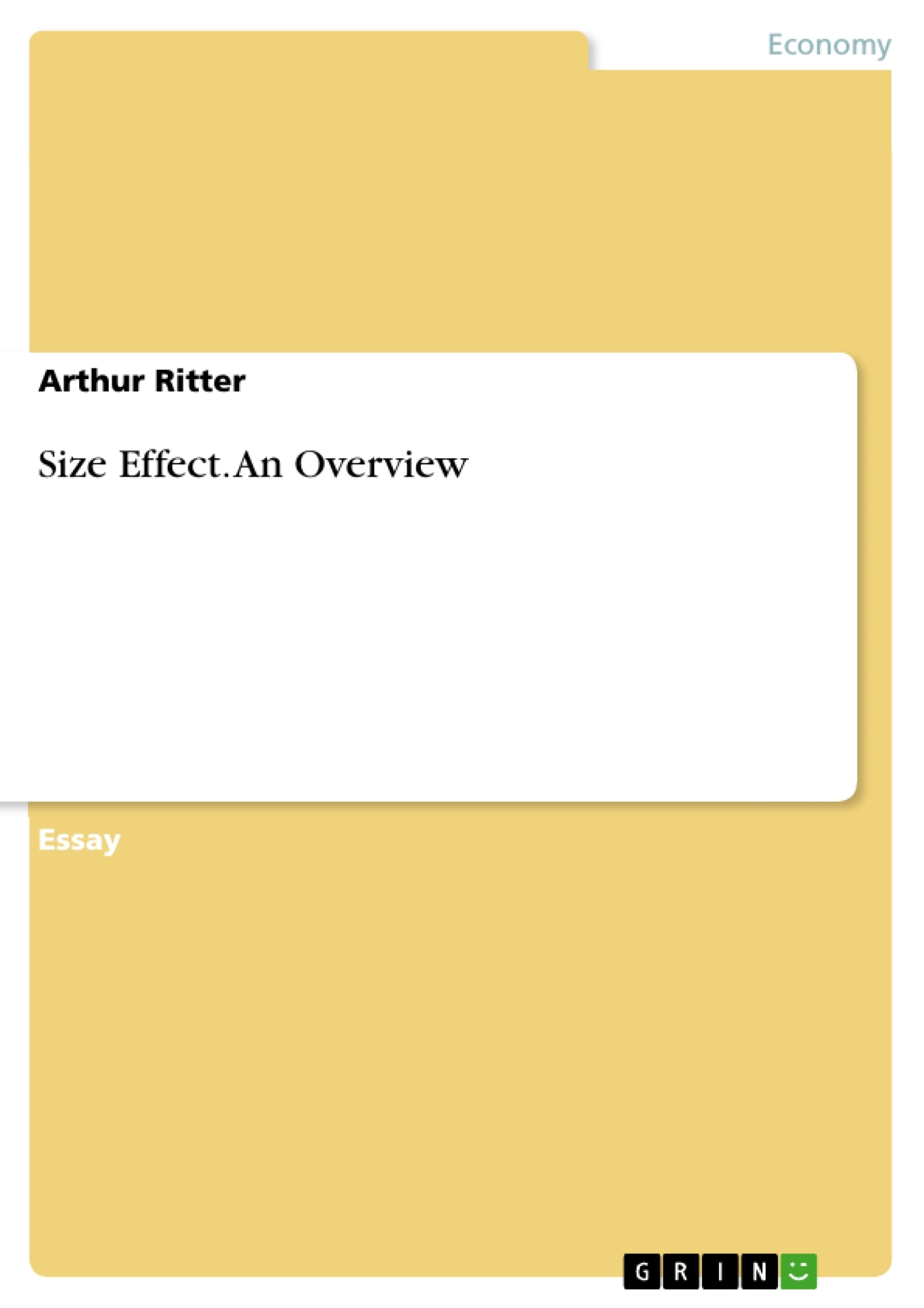The size effect is a market anomaly in asset pricing according to the market efficiency theory. According to the current body of research, market anomalies arise either because of inefficiencies in the market or the underlying pricing model must be flawed. Anomalies in the financial markets are typically discovered form empirical tests. These tests usually rely jointly on one null hypothesis H0= markets are efficient AND they perform according to a specified equilibrium model (usually CAPM). Thus, if the empirical study rejects the H0, the reason could either be due to market inefficiency or due to the incorrect model. Market efficiency theory says that the price of an asset fully reflects all current information and is not predictable (Fama 1970). Fama (1997) states that market anomalies, even long-‐term anomalies, are not an indicator for market inefficiencies due to the reason that they randomly split between “underreaction and overreaction, (so) they are consistent with market efficiency” (p. 284), they happen by chance and it is always possible to beat the market by chance. This essay will give an overview of the literature of the size effect and will stress the key theories, empirical methods and findings, as well as the existing body of research about this particular anomaly.
Inhaltsverzeichnis (Table of Contents)
- Introduction
- Empirical Methods
- Theories and Concepts
- Empirical Evidence
- Reasons for the Size-Effect
Zielsetzung und Themenschwerpunkte (Objectives and Key Themes)
This essay provides a comprehensive overview of the size effect in asset pricing. The essay focuses on the key theories, empirical methods, and findings related to this market anomaly.
- The discovery and definition of the size effect
- Empirical evidence for and against the size effect
- Theories explaining the size effect, including liquidity risk, price delay, and changing risk premiums
- The impact of the size effect on asset pricing models, specifically the Capital Asset Pricing Model (CAPM)
- Future research directions for understanding the size effect and its implications for financial markets.
Zusammenfassung der Kapitel (Chapter Summaries)
- Introduction: This chapter introduces the concept of the size effect as a market anomaly in asset pricing. It discusses the implications of market anomalies for market efficiency theory and the Capital Asset Pricing Model (CAPM).
- Empirical Methods: This chapter examines the two main empirical methods used to test the size effect: cross-sectional linear regression and size-group categorization. The advantages and limitations of each method are discussed.
- Theories and Concepts: This chapter delves into the theories and concepts underlying the size effect. It reviews the development of the CAPM and discusses how the size effect challenges its assumptions. The chapter also introduces alternative models that incorporate factors like liquidity risk and price delay to explain the size effect.
- Empirical Evidence: This chapter presents empirical evidence for and against the size effect. It examines studies that have found a significant size premium as well as those that have failed to find such a premium. The chapter also discusses the potential reasons for the observed changes in the size effect over time.
- Reasons for the Size-Effect: This chapter explores various explanations for the size effect. It examines the roles of liquidity risk, price delay, and changing risk premiums in contributing to higher returns for smaller firms.
Schlüsselwörter (Keywords)
The essay focuses on key topics and concepts related to the size effect in asset pricing, including market anomalies, market efficiency theory, Capital Asset Pricing Model (CAPM), empirical methods, liquidity risk, price delay, changing risk premiums, and cross-sectional regression.
- Quote paper
- Arthur Ritter (Author), 2014, Size Effect. An Overview, Munich, GRIN Verlag, https://www.grin.com/document/289140




